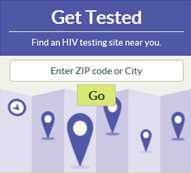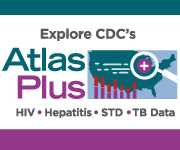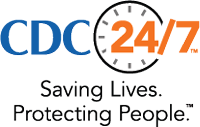CDC Programs At-A-Glance
CDC has many varied activities and programs to address the health and well-being of gay and bisexual men. Below is a description of some of the activities for gay and bisexual men’s health across the agency.
HIV/AIDS
 In fiscal year (FY) 2013, approximately 41 percent of CDC’s Division of HIV/AIDS Prevention’s Extramural Prevention Program Budget was targeted to HIV prevention activities for gay and bisexual men. CDC’s approach to addressing the HIV epidemic among adolescent and adult gay and bisexual men involves three areas of commitment:
In fiscal year (FY) 2013, approximately 41 percent of CDC’s Division of HIV/AIDS Prevention’s Extramural Prevention Program Budget was targeted to HIV prevention activities for gay and bisexual men. CDC’s approach to addressing the HIV epidemic among adolescent and adult gay and bisexual men involves three areas of commitment:
- Engaging gay and bisexual communities and strategic partners;
- Expanding effective prevention strategies and programs; and
- Evaluating and disseminating information on strategies and programs.
HIV Prevention Communication
CDC is committed to increasing HIV prevention awareness among gay, bisexual, and other men who have sex with men. Among the CDC campaigns and initiatives are:
Reasons/Razones Campaign
 Reasons/Razones aims to increase HIV testing among Latino gay and bisexual men ages 18 to 49. The campaign’s messages emphasizes family and partner relationships and normalizes HIV testing through positive messages.
Reasons/Razones aims to increase HIV testing among Latino gay and bisexual men ages 18 to 49. The campaign’s messages emphasizes family and partner relationships and normalizes HIV testing through positive messages.
Start Talking. Stop HIV.
 Start Talking. Stop HIV. was created for all openly gay and bisexual men ages 18-64, with an emphasis on those 18-24. The campaign’s messages emphasize HIV-related communication between intimate partners, knowledge about HIV prevention strategies (e.g., condom use, treatment with Antiretroviral Therapy (ART), Pre-exposure Prophylaxis (PrEP), and Post-exposure Prophylaxis (PEP) for intimate partners, HIV-related information-seeking behaviors, and increase positive norms about HIV-related communication).
Start Talking. Stop HIV. was created for all openly gay and bisexual men ages 18-64, with an emphasis on those 18-24. The campaign’s messages emphasize HIV-related communication between intimate partners, knowledge about HIV prevention strategies (e.g., condom use, treatment with Antiretroviral Therapy (ART), Pre-exposure Prophylaxis (PrEP), and Post-exposure Prophylaxis (PEP) for intimate partners, HIV-related information-seeking behaviors, and increase positive norms about HIV-related communication).
Testing Makes Us Stronger
 Testing Makes Us Stronger focuses on increasing HIV testing among 18-to-44year-old black/African American gay and bisexual men. The campaign’s messages emphasize that HIV testing is a source of strength, not a reason for fear. In collaboration with the Division of Adolescent and School Health (DASH), Testing Makes Us Stronger was adapted for 16-to-19-year old black/African American YMSM.
Testing Makes Us Stronger focuses on increasing HIV testing among 18-to-44year-old black/African American gay and bisexual men. The campaign’s messages emphasize that HIV testing is a source of strength, not a reason for fear. In collaboration with the Division of Adolescent and School Health (DASH), Testing Makes Us Stronger was adapted for 16-to-19-year old black/African American YMSM.
National Gay Men’s HIV/AIDS Awareness Day (NGMHAAD)
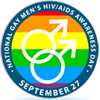 National Gay Men’s HIV/AIDS Awareness Day (NGMHAAD) Working together with state and local public health agencies, community-based organizations (CBOs), and other partners, CDC supports NGMHAAD. These Awareness Days urge individuals to have open dialogue about HIV with partners, peers, and families.
National Gay Men’s HIV/AIDS Awareness Day (NGMHAAD) Working together with state and local public health agencies, community-based organizations (CBOs), and other partners, CDC supports NGMHAAD. These Awareness Days urge individuals to have open dialogue about HIV with partners, peers, and families.
Act Against AIDS Leadership Initiative (AAALI)
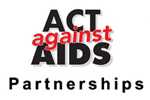 To foster community leadership and engagement, the CDC supports the Act Against AIDS Leadership Initiative (AAALI). Two AAALI organizations focused primarily on black/African American gay and bisexual men are the Black Men’s Xchange-National and the Center for Black Equity. AAALI members are responsible for coordinating outreach events, facilitating HIV testing, and engaging local affiliates across the country in HIV prevention activities.
To foster community leadership and engagement, the CDC supports the Act Against AIDS Leadership Initiative (AAALI). Two AAALI organizations focused primarily on black/African American gay and bisexual men are the Black Men’s Xchange-National and the Center for Black Equity. AAALI members are responsible for coordinating outreach events, facilitating HIV testing, and engaging local affiliates across the country in HIV prevention activities.
We R Native
 The CDC partnered with the Northwest Portland Area Indian Health Board to create We R Native, focusing on sexual identity; and consult on the Red Talon Project, which works to achieve a more coordinated national and Northwest tribal response to STDs/HIV.
The CDC partnered with the Northwest Portland Area Indian Health Board to create We R Native, focusing on sexual identity; and consult on the Red Talon Project, which works to achieve a more coordinated national and Northwest tribal response to STDs/HIV.
NASTAD Collaboration
 The CDC collaborated with National Association of State and Territorial AIDS Directors to release an Issue Brief: Native Gay Men and Two Spirit People HIV/AIDS and Viral Hepatitis Programs and Services.
The CDC collaborated with National Association of State and Territorial AIDS Directors to release an Issue Brief: Native Gay Men and Two Spirit People HIV/AIDS and Viral Hepatitis Programs and Services.
Programs for Youth
Young Men Who Have Sex With Men (YMSM) Project
CDC’s Division of Adolescent and School Health (DASH) provides funding and support through a 5-year cooperative agreement for the Young Men Who Have Sex with Men (YMSM) Project to three local education agencies and a national non-profit organization to implement multi-component, school-centered HIV prevention activities for teen MSM ages 13-19. Recipients of the competitive funding are the School Board of Broward County, Los Angeles Unified School District, San Francisco Unified School District, and Advocates for Youth. The project is guided by the National HIV/AIDS Strategy.
Goal
Reduce HIV and other STDs among black and Hispanic/Latino young men who have sex with men (YMSM) through school and community-based partnerships by:
- Increasing the number of teen YMSM who are tested and treated for HIV and other STDs
- Decreasing sexual risk behaviors among teen YMSM
- Reducing absenteeism and school drop-out among teen YMSM
Core Strategies
- Implement or expand HIV and other STD testing and treatment in schools and school-based health centers
- Increase collaboration in order to support referrals to HIV and other STD testing, treatment, and evidence-based educational interventions
- Develop systems in schools to support student referrals to HIV and other STD testing and treatment
- Assess state and district education policies and their implementation related to HIV and other STD testing, treatment, and prevention
- Promote safe school and school-based health center environments
- Provide evidence-based education interventions tailored for black and Hispanic/Latino YMSM
- Implement social marketing that promotes the core strategies
Project Rationale
School-Centered HIV/STD Prevention for Young Men Who Have Sex with Men (YMSM)
Surveillance and Research
CDC is actively involved in providing information through surveillance and research to further understand HIV risk in affected populations.
- The National HIV Behavioral Surveillance System (NHBS) has provided important findings on populations at risk of HIV infection, including adolescent and adult gay and bisexual men. Reports from the NHBS are published in the CDC’s MMWR Weekly Reports.
- The Web-Based HIV Behavioral Surveillance System among MSM (WHBS) conducted a national web-based behavioral survey among internet-using gay and bisexual men in the United States. The objectives of the project were to describe HIV risk behaviors, HIV testing behaviors, and exposure to and use of HIV prevention services.
- The Medical Monitoring Project (MMP) is a surveillance project designed to produce nationally representative data on people living with HIV who are receiving care in the United States. This includes more than 50% of gay and bisexual men of all races/ethnicities. MMP aims to provide a deeper understanding of the health-related experiences and needs of people living with HIV who are receiving care in the U.S. Information is available on the MMP Resource Page.
- The National HIV/AIDS Strategy for the United States Federal Implementation Plan called for efforts to support surveillance activities to better characterize HIV among smaller populations such as Asian Americans (AAs) and Native Hawaiians and other Pacific Islanders (NHOPIs), and for CDC to provide recommendations on effective HIV surveillance activities to health departments of states with high concentrations of AA and NHOPI populations. CDC responded by publishing, Effective HIV Surveillance among Asian Americans and Native Hawaiians and Other Pacific Islanders.
- Through the Minority HIV/AIDS Research Initiative (MARI), CDC funds grantees to conduct HIV epidemiologic prevention research in communities of color (namely black, Hispanic/Latino), which includes gay and bisexual men. A goal of MARI is to build HIV prevention research capacity in these communities through mentorship of junior investigators and implementation of HIV prevention research that are of local, regional, and national importance.
- For the Latino and African American MSM Project (LAAMP), CDC funded six sites to evaluate the preliminary efficacy of newly developed behavioral interventions designed to reduce HIV acquisition and transmission among high-risk black/African American and Hispanic/Latino gay and bisexual men.
- CDC initiated the Messages4Men Study, which aims to evaluate multiple and complex HIV risk reduction messages for black/African American and Hispanic/Latino gay and bisexual men in three cities; Chicago, Fort Lauderdale, and Kansas City. This study will test HIV prevention messages (e.g. PrEP, PEP, ARVs, condom, HIV testing, etc.) among high risk gay and bisexual men to be used in future CDC communication and prevention efforts.
- The CDC Foundation and Gilead will begin conducting the Sustainable Health Center Implementation PrEP Pilot (SHIPP) Study in 2015. The SHIPP study is a health services implementation pilot study, that will be conducted with an observational cohort of HIV-uninfected persons including men who have sex with men, heterosexual women and men, and injection drug users receiving daily oral PrEP at four federally qualified health centers that provide sexual health and primary care services to communities with high HIV incidence and prevalence. The goal of the study is to learn lessons about how best to incorporate the delivery of daily oral PrEP into the services provided by health centers serving sexually active adults at high risk of acquiring HIV infection.
Expanding Effective HIV Prevention through Health Departments, Education Agencies and Community-Based Organizations
CDC provides direct funding opportunities to state and local health departments and community based organizations across the United States for HIV prevention activities. The approach guides grantees to direct resources to areas and populations where HIV is most concentrated, which includes gay and bisexual men.
Comprehensive Human Immunodeficiency Virus (HIV) Prevention Programs for Health Departments
CDC awarded approximately $358.8M annually for a five year period, to health departments to conduct Core Prevention Programs ($284M), Expanded HIV Testing for Disproportionately Affected populations ($54.8M), and Demonstration Projects ($20M). The awardees were given guidance to ensure that prevention funds are directed to the activities that are most likely to have a significant and lasting impact on the HIV epidemic. CDC’s new approach features better geographic targeting of resources and a stronger focus on supporting the highest-impact prevention strategies. This approach embodies CDC’s commitment to high impact prevention using scalable, cost-effective interventions with demonstrated potential to reduce new infections to yield a major impact on the HIV epidemic.
Reaching Gay, Bisexual, and Transgender Youth of Color
The CDC awarded approximately $55 million over five years to 34 community-based organizations in Metropolitan Statistical Areas (MSA) to expand HIV prevention services for young gay and bisexual men of color, transgender youth of color, and their partners. The purpose of the program is to support the development and implementation of effective community-based HIV Prevention Programs that serve young gay and bisexual men of color and young transgender persons of color and their partners at high risk for acquiring or transmitting HIV.
Secretary’s Minority AIDS Initiative Funding for Care and Prevention in the United States (CAPUS) Demonstration Project
The CAPUS Demonstration Project is a three-year cross-agency demonstration project led by CDC. The purpose of the project is to reduce HIV and AIDS-related morbidity and mortality among racial and ethnic minorities living in the United States. The primary goals of the project are to increase the proportion of racial and ethnic minorities with HIV who have diagnosed infection by expanding and improving HIV testing capacity, and optimizing linkage to, retention in, and re-engagement with care and prevention services for newly diagnosed and previously diagnosed racial and ethnic minorities with HIV. These two goals are to be achieved by addressing social, economic, clinical, and structural factors influencing HIV health outcomes.
Human Immunodeficiency Virus (HIV) Prevention Projects for the Commonwealth of Puerto Rico and the United States Virgin Islands
CDC awarded funding to 8 community-based organizations under this award. The purpose of the program is to support the development and implementation of high impact, comprehensive community-based HIV Prevention Programs to achieve maximum impact on reducing new HIV infections via provision of services to persons at high risk for transmitting and acquiring HIV in the Commonwealth of Puerto Rico and the U.S. Virgin Islands.
Capacity Building Assistance (CBA) for High-Impact HIV Prevention
The CDC awarded $115 million over five years to train and strengthen 21 capacity-building organizations and ensure on-the-ground prevention programs and their staff have the skills, information, and organizational support they need to best serve individuals living with, and at high risk for, HIV in their communities. Consistent with high impact prevention, the new CBA awards are designed to enable capacity building organizations to prioritize populations in greatest need and serve them even more effectively by increasing the availability and accessibility of culturally and linguistically appropriate prevention services.
CDC continues to work with the Indian Health Service (IHS) and tribal leaders of the CDC Tribal Consultation Advisory Committee to discuss methods for developing and implementing scalable, effective prevention intervention approaches that reach those at greatest risk for HIV and AIDS, including young gay and bisexual American Indian/Alaskan Native men.
Expanding Routine HIV Testing
CDC recommends that sexually active gay and bisexual men be tested for HIV infection at least annually and that gay and bisexual men at high risk (e.g., those who have multiple or anonymous partners, who have sex in conjunction with illicit drug use, or whose partners participate in these activities) could benefit from more frequent testing,(i.e. 3-6 months). Below are relevant programs aimed at increasing HIV testing among adolescent and adult gay and bisexual men.
- Through its MSM Testing Initiative, CDC aims to scale up HIV testing among blacks/African Americans and Hispanics/Latinos. The goal of this project is to establish and evaluate an HIV Testing and Linkage to Care Program to identify HIV-infected gay and bisexual men previously unaware of their infection and link them to HIV medical care.
- The Expanded Testing Initiative (ETI) was implemented to support HIV testing among gay and bisexual men of all races and ethnicities, and injection drug users, and the provision of HIV testing in non-clinical settings, such as pharmacy clinics.
Enhancing HIV Mobilization among Organizations Serving Gay, Bisexual, and Other Men Who Have Sex with Men
- In 2012 and 2013, CDC awarded $240,000 to two organizations—AIDS United and the Center for Black Equity (formerly the International Federation of Black Prides)—to focus on the sexual health of gay and bisexual men by increasing HIV awareness, prevention, communication, and mobilization efforts, and taking action to improve the health of gay and bisexual men living with HIV.
A School-Centered Approach to HIV Prevention
CDC, through a collaboration between the Division of HIV/AIDS Prevention and the Division of Adolescent and School Health awarded $1 million annually over 3 years for a school-centered project directed at reducing the risk of HIV and STD infection in male adolescent gay and bisexual students ages 13–19 with a focus on black/African American and Latino adolescent gay and bisexual males. This program began in 2013.
Three school districts and one national, nongovernmental organization were funded to conduct activities that will increase the number of male adolescent gay and bisexual students who are tested and treated for HIV and STD; decrease sexual risk behaviors among male adolescent gay and bisexual students; and reduce absenteeism and school drop-out among male adolescent gay and bisexual students.
Funded school districts implement multiple activities to meet the local HIV/STD prevention needs of male adolescent gay and bisexual students in priority schools including:
- Increasing HIV and STD testing and treatment in schools and school-based health centers;
- Building collaboration between schools, school-based health centers, community-based organizations, and other health care providers for linkage and referral to HIV and STD testing and treatment, and evidence-based educational interventions;
- Developing a systematic process for school staff (e.g., nurses, counselors, and social workers) to refer students to HIV and STD testing and treatment;
- Assessing and implementing existing policies that impact HIV and STD-related testing, treatment, and prevention interventions for male adolescent gay and bisexual students;
- Implementing programs to promote safe and supportive school and school-based health center environments for male adolescent gay and bisexual students;
- Implementing social marketing campaigns for male adolescent gay and bisexual students that focus on HIV/STD prevention; and
- Implementing evidence-based HIV prevention behavioral interventions tailored for male adolescent gay and bisexual students.
Behavioral Interventions
Adapting and Evaluating Effective Behavioral Interventions for Gay and Bisexual Men
The Diffusion of Effective Behavioral Interventions (DEBI) project aims to reduce the spread of HIV and STIs and to promote healthy behaviors. A number of DEBIs have been adapted and evaluated for use with gay and bisexual men of all races and ethnicities.
Evaluating Recruitment Strategies for Improving the Effectiveness of HIV Testing Programs among Gay and Bisexual Men
The African American MSM Testing Project evaluated the relative effectiveness of three recruitment strategies—alternate venue testing, the social network strategy, and partner counseling and partner services—for identifying and motivating black/African American gay and bisexual men, aged 18–64 years, to be tested for HIV and linked to appropriate prevention services. Four sites—one health department and three CBOs located in Atlanta, Baltimore, Washington, DC, and New York City—were funded to conduct this project. Results for the New York, Washington, D.C., and Baltimore sites were published.
Evaluating Locally Developed Behavioral Interventions Focused on Gay and Bisexual Men
CDC supports the rigorous evaluation of locally developed behavioral interventions as a way to identify innovative strategies developed by the community, and for the community, that are effective in reducing HIV risk among gay and bisexual men.
- CDC completed an evaluation study of the evidence-based intervention—Many Men, Many Voices intervention in combination with HIV testing among gay and bisexual men.
- CDC is supporting the evaluation of two locally developed interventions for black/African American gay and bisexual men: the Critical Thinking and Cultural Affirmation intervention, developed by Black Men’s Exchange Program in New York City; and My Life. My Style., developed by In the Meantime Men’s Group, Inc., in Los Angeles.
Adapting and Evaluating a Behavioral Intervention Focused on Adolescent Black/African American Gay and Bisexual Men
In collaboration with the Division of Adolescent and School Health, the evidence-based intervention Many Men, Many Voices has been adapted for 16-19 year old gay and bisexual young men and was piloted in Los Angeles in 2014.
Organizational Initiatives to Support Focus on Populations Most Affected by HIV
CDC created organizational structures, including workgroups that aid in addressing the HIV epidemic among gay and bisexual men.
- The goals of the agency-wide CDC/ATSDR Sexual and Gender Minorities (SGM) Workgroup are to improve understanding of SGM health disparities and needs, increase two-way communication with key SGM external partners, and promote SGM program services, education and communication products, data collection, and research within CDC. (SGM@cdc.gov)
- The primary purpose of the CDC MSM Executive Committee is to provide a forum to discuss and coordinate activities related to preventing HIV and AIDS, viral hepatitis, and other sexually transmitted infections (STIs) among gay, bisexual, and other MSM. The Executive Committee is responsible for providing input on emerging issues that affect risk for STIs among gay and bisexual men to address the inclusion of these issues in surveillance, research, prevention programs, capacity building, policy, monitoring and evaluation, and communications to appropriate staff, external partners, and consumers.
- The Office of Health Equity within the Division of HIV/AIDS Prevention (DHAP OHE) was established in 2010 to provide leadership on understanding the determinants of HIV and AIDS inequities and developing strategies for increasing health equity, and to coordinate and monitor the Division’s activities related to reducing health inequities among populations most disproportionately affected by the epidemic. The OHE’s MSM Coordinator manages activities directed to gay, bisexual, and other MSM and provides assistance to Division leadership on a wide array of HIV-related research, surveillance, and programmatic activities that guide the national HIV prevention mission. (DHAPOHE@cdc.gov)
CDC’s Commitment
CDC is committed to the continued prioritizing of proven strategies for those at highest risk of HIV infection. Additionally, the Division of HIV/AIDS Prevention’s Strategic Plan, the National HIV/AIDS Strategy for the United States, and High-Impact HIV Prevention provide direction to prioritize prevention activities for gay and bisexual men and engage in strategies to reduce HIV incidence, increase access to care and optimize health outcomes, and reduce HIV-related health disparities among these populations.
Sexually Transmitted Diseases
 CDC’s Division of Sexually Transmitted Diseases Prevention (DSTDP) is concentrating its efforts on four priority areas to guide STD prevention, maximize long term impact, and reduce health disparities:
CDC’s Division of Sexually Transmitted Diseases Prevention (DSTDP) is concentrating its efforts on four priority areas to guide STD prevention, maximize long term impact, and reduce health disparities:
- Men Who Have Sex with Men (MSM)
- Adolescents and young adults
- Multidrug-resistant gonorrhea
- Congenital syphilis infection
The approach to STD control in the U.S. focuses on:
- Prevention of transmission of STDs and HIV;
- Health education, promotion, and behavior change;
- Identification and treatment of infected individuals through the screening of asymptomatic persons and linking them to care (usually in state-funded STD clinics);
- Individually-based interventions (e.g., health department-delivered partner notification and partner treatment.
STD AAPPS (Assessment, Assurance, Policy Development, and Prevention Strategies)
Using a program science framework, the STD AAPPS funding opportunity announcement provides critical resources for state and local programs to address the STD disparities among gay, bisexual, and other men who have sex with men. The funding for this flagship program is $90 million for STD and STD-related HIV prevention. The STD AAPPS promotes opportunities to:
- Align allocation of funds with burden of disease and at-risk populations;
- Prioritize prevention strategies and interventions;
- Provide more direction to focus on Core Public Health functions (strengthen surveillance and evaluation); and
- Increase flexibility for grantees in directing resources to address state and local needs and priorities.
More DSTDP Efforts Specifically Aimed at Reaching Gay, Bisexual, and other Men Who Have Sex With Men
-
Community Approaches For Reducing STDS (CARS) Project (Richmond, VA)
- Conducted 12 focus groups to better understand the needs of the community and the knowledge of providers about sexual health issues affecting gay, bi, and other men who have sex with men;
- Established a relationship with 3 House/Ball communities in Richmond City to implement strategies and events targeting gay, bi, and other men who have sex with men;
- Established a peer educator and advocate network for gay, bi, and other men who have sex with men utilizing House/Ball community leaders and members; and
- Implemented the d-up: Defend Yourself! Intervention in Richmond City with Black gay, bi, and other men who have sex with men between the ages of 18-29.
-
CARS Funding Opportunity Announcement (F0a) #CDC-RFA-Ps14-1406 – Published on February 10, 2014
Populations of interest to this announcement include: Young and adult gay, bi, and other men who have sex with men and other vulnerable populations seen in HIV care and other selected facilities, and adolescents and young adults diagnosed and reported with an STD of interest.
Viral Hepatitis
Integrating HIV-Viral Hepatitis Testing And Linkage To Care For At-Risk Populations
The Minority AIDS Initiative is exploring the feasibility of integrating hepatitis B (HBV) and hepatitis C (HCV) screening into HIV testing services in order to improve health outcomes for racial/ethnic minorities living with HIV by addressing viral hepatitis co-infections. The three goals of the demonstration project are as follows:(1) Increase the proportion of racial/ethnic minorities living with HIV who aware of their HIV/viral hepatitis co-infection status; (2) Increase access to viral hepatitis prevention services for racial/ethnic minorities living with HIV; and (3) Increase the proportion of racial/ethnic minorities living with HIV/viral-hepatitis co-infections that are linked to care and treatment.
Three sites have been selected to conduct integrated HIV-viral hepatitis testing and linkage to care activities; one site to carry out integrated HIV-HBV testing of Asian and Pacific Islanders, and two sites for integrated HIV-HCV testing of racial/ethnic minorities that identify as MSM, persons who inject drugs, and other at-risk populations. Each site has integrated viral hepatitis testing and linkage to care activities into their HIV testing protocol and is providing feedback on integrated testing activities.
For this project, both qualitative and quantitative data are being collected. The qualitative data collection includes semi-structured interviews of staff members involved in various aspects of providing integrated HIV-viral hepatitis testing and linkage to care services. Quantitative testing and linkage to care data are collected via the EvaluationWeb® HepTLC system. Both the qualitative and quantitative data from this project will provide valuable insights into identifying successes, challenges, and creative solutions to address these challenges in providing integrated HIV and viral hepatitis testing services.
- Page last reviewed: February 29, 2016
- Page last updated: January 25, 2017
- Content source:


 ShareCompartir
ShareCompartir
